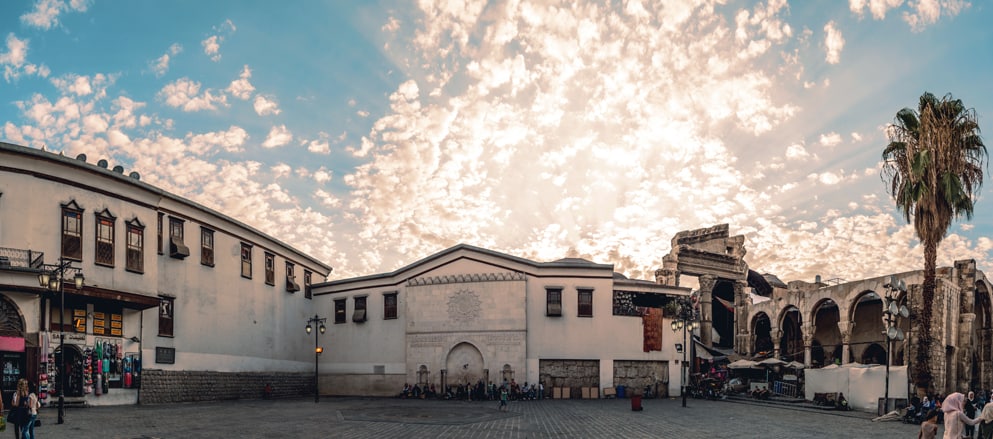What is the oldest city in the world?

Mark Twain declared that the Indian city of Varanasi was ‘older than history, older than tradition, older even than legend’. He was, of course, wrong. So which exactly is the world’s most ancient continuously inhabited city?
- What is the world’s coldest city?
There was once a city called Crocodilopolis, where they worshiped the crocodile god Sobek. The people of Crocodilopolis paid devotion to an earthly representative of Sobek, a living crocodile they called Petsuchos and covered in gold and gems and kept in a temple, though it is unclear how they did this without loss of life or limb. When one Petsuchos died, they simply replaced him with another, like a fairground goldfish.
Crocodilopolis was established on the Nile, southwest of Memphis, about 4,000BC. The Egyptians called it Shedet (it was the Greeks who, wise to the city’s USP, gave it its snappy name), and it was possibly the most ancient city in ancient Egypt. It is now part of the modern city of Faiyum – which makes Faiyum possibly the oldest continuously inhabited city in the world.
But only possibly. Beyond the easy task of immediately discounting every city in North America and Australasia, identifying the world’s oldest continuously inhabited city is an uncertain business. There is a mess of claim and counterclaim, myth and legend, architectural digs and disputed evidence.
One reason for the stickiness of this subject is the whole matter of deciding when a settlement becomes a city at all – some argue when it abandons simple self-sufficiency and establishes trade, others when it develops plumbing. There is also a long-running spat in academic circles about whether cities could predate agriculture.
But even among places that are undisputedly cities, the claimants stretch from Varanasi, India to Plovdiv, Bulgaria. Varanasi (once known as Benares) can count Mark Twain in its corner – “Benares is older than history, older than tradition, older even than legend, and looks twice as old as all of them put together,” Twain said – but its claim seems to rest on the legend that it was established by Lord Shiva in 3,000BC, while all the actual evidence suggests it was founded on the Ganges 2,000 years later. Plovdiv, meanwhile, has a far stronger case, with evidence of continuous settlement dating back to 6,000BC.
But it is the Middle East and the Fertile Crescent that is the most, well, fertile area for antique urbanity. Not that this makes the job of firmly planting a flag on the oldest city any easier. Cities in this region have not shouted their claims, or investigated them, or tried to trade them for the tourist dollar, as energetically as have the big hitters in ancient city fame, such as Rome, Athens or even Cirencester.
Iraq for instance has Kirkuk, once the ancient Assyrian capital of Arrapha, founded around 2,200BC, and with the ruins of a 5,000-year-old castle to prove its bona fides. Then there is nearby Erbil, capital of the Kurdistan region of Iraq, which claims settlements dating back to 6,000BC.
Iran meanwhile has Susa, now the delightfully named Shush, administrative centre of Shush Country, which has an acropolis – a sure sign of ancient city status – that is carbon-dated to around 4,200BC, and evidence of permanent homemaking going back another 800 years. Susa’s claims are somewhat dented, however, by the fact that it was downgraded to “small settlement” between the 15th and 20th centuries.
Jerusalem and Beirut can both claim urbanisation going back to at least 3,000 BC, as can Jericho in the West Bank. Indeed, archeologists have found evidence of 20 successive settlements in Jericho dating back as far as 9,000BC. And they were already building walls around their proto-city: serious 12ft high, 6ft wide walls, a remarkable and unprecedented feat of defensive architecture. Jericho, as the Bible tells us, developed a thing about walls. The city later became a private estate for Alexander the Great, and Herod – that Herod – leased it from Cleopatra, who had been given it by Mark Anthony as a gift. What else do you give the woman who has everything?
Again, though, Jericho has a tenuous grip on the “continuously inhabited” tag, having been largely abandoned for centuries on end. Byblos, a once groovy Mediterranean resort in Lebanon, is possibly the first Phoenician city, founded in 7000BC – not as old as Jericho, maybe, but at least it can claim continuous habitation since 5,000 BC.
Damascus was once a (largely) undisputed shoo-in for oldest city. It was name-checked in Genesis, and there is evidence of settlement going back to 9,000BC. Unfortunately, there is no clear evidence of meaningful activity in what is now Damascus proper until the 2nd millennium BC – a bit like West Bromwich arriving seven centuries before Birmingham. (Herod, by the way, may also have been gifted Damascus. He was clearly doing something right.)
Ironically, it is not Damascus but Aleppo, poor, benighted Aleppo, which is actually Syria’s largest city and was once a mighty rival to Cairo and Constantinople, that has a far stronger case for being the world’s oldest city. The evidence of settlement goes back to 6,000BC, but excavations north of the city suggest wandering nomads made domestic camps here 5,000 years before that.
Written records show that Aleppo was an important city long before Damascus. It is really only since the opening of the Suez Canal that Aleppo has declined as a major trading city. Until the recent civil war, there had been serious efforts to preserve the citadel, which dates back to the first century BC, as well as Aleppo’s mosques and its medieval hammams and souks. All that has now gone up in smoke, and Aleppo’s old city is so much rubble and ruin. It may be impossible to say with any certainty what is the world’s oldest city – for a very old argument, it is remarkably fluid, with new discoveries all the time – but for now it seems only right to give it to Aleppo, the oldest city currently being fought for and sacked, as all these cities have from the beginning.




